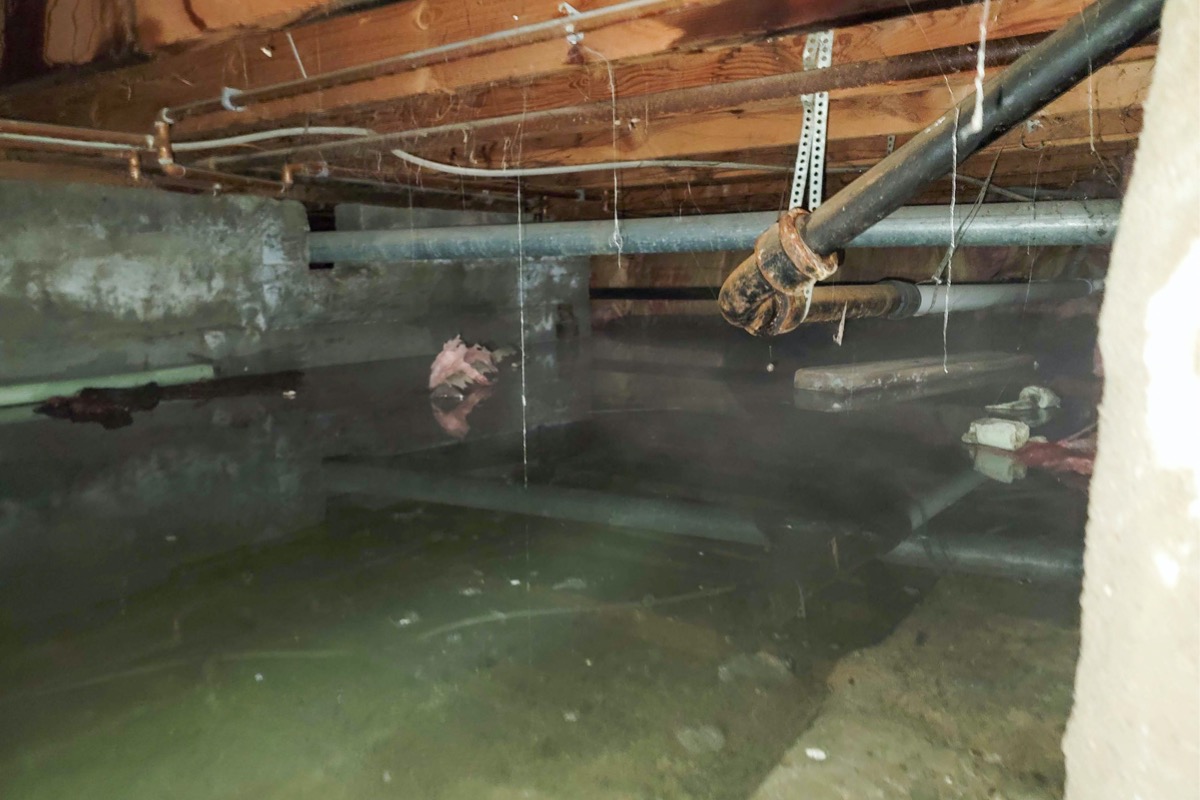We may earn revenue from the products available on this page and participate in affiliate programs. Learn More ›
Q: I recently opened the access door to my crawl space and found it full of water. I couldn’t spot an active leak to explain the flooding, so I’m not sure how it happened or if there’s any damage. What should I do to find the source of the water, and how do I keep my crawl space dry in the future?
A: Water can leak into a crawl space from a variety of different sources, including active leaks from pipes or plumbing fixtures, draining water from gutters and downspouts, or even groundwater seeping up into the crawlspace. Once you have water in a crawl space, it can sit there for months or years. This standing water can erode a home’s foundation, rot the wooden beams and joists, and create mold and mildew issues that impact the air quality within the home.
You will need to examine all possible sources to find out where the water is coming from so you can take appropriate steps to prevent future flooding. Some solutions include installing a sump pump, adding a vapor barrier, and fixing the grading around your house so that water flows away from it.
RELATED: What’s the Difference? Slab Foundation vs. Crawl Space
Investigate where the water is coming from.
The first thing you need to do when you find water leaking into a crawl space is determine the source(s) of the water. There are several possible sources of flooding, including surface water, groundwater, active plumbing problems, and severe humidity issues. After finding the source of the issue, you can decide how to keep water out of your crawl space with effective fixes.
Crawl spaces can contain many dangers, especially if the area is flooded. Before dealing with water in a crawl space after a heavy rain or leak, take a look to ensure that there aren’t any wires or electrical outlets in the water. Also, wear heavy gloves, knee pads, long pants, a long-sleeved shirt or coat, and closed-toe shoes to help protect from rocks, glass, nails, and any other sharp or hazardous debris that may be in the space. Keep in mind that heavy, invisible gasses can also sit in a low-lying area like a crawl space. If at all possible, air out the crawl space with one or more fans before entering.
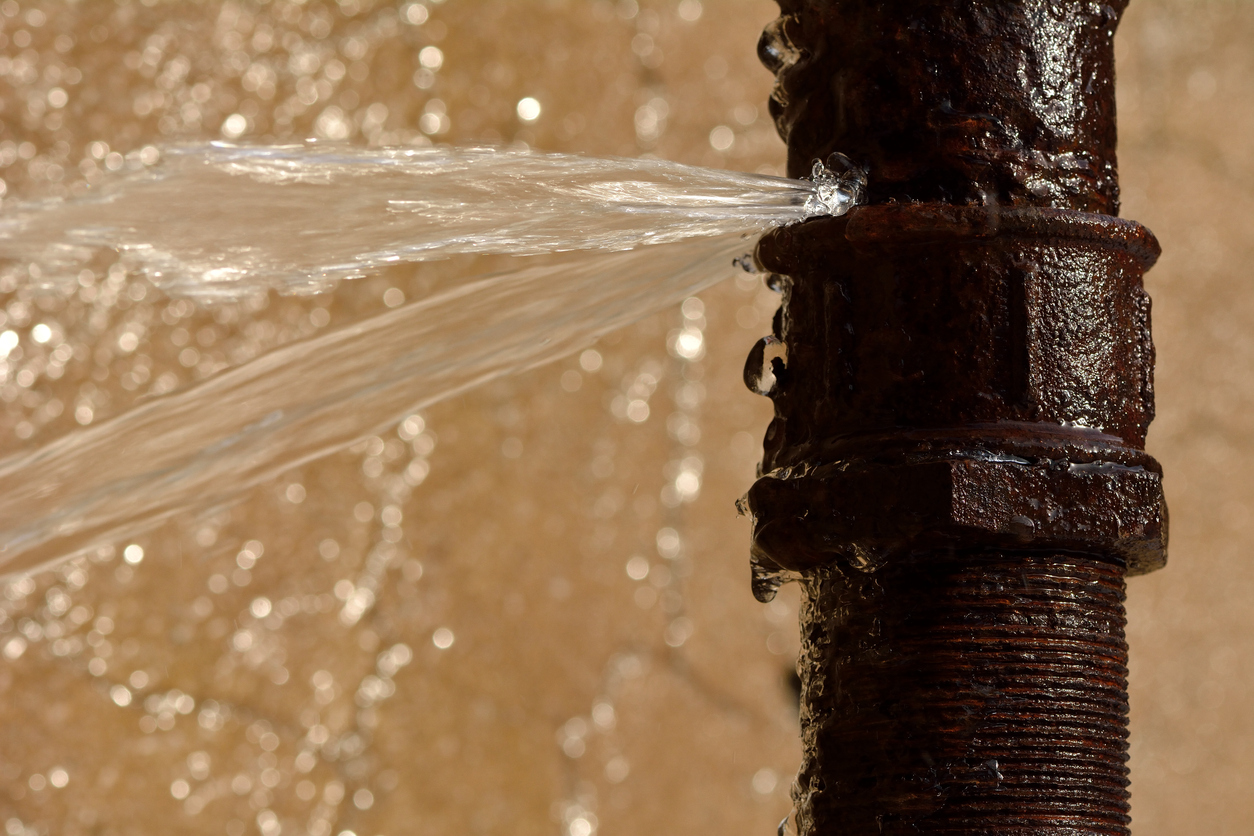
Surface water isn’t usually a problem since a home outfitted with gutters and downspouts will typically divert the water away from a crawl space. However, if your gutters are full of debris, water can flow over the sides and pool around the foundation of your home. Additionally, if a downspout is bent, broken, or simply pointed in the wrong direction, rainwater and meltwater from snow and ice may enter the crawl space.
Groundwater is one of the more difficult problems to deal with because the water leaks into the crawl space from the surrounding soil. This issue is especially prevalent during the rainy season and can be exacerbated by melting snow and ice.
Plumbing problems may seem like the worst source of crawl space flooding, but an active leak is generally one of the easier issues to repair. Finding and fixing a leaking pipe is relatively straightforward, but plumbing problems can also include leaks from the dishwasher, washing machine, or even the water line for the refrigerator, so make sure to do a thorough inspection of the crawl space.
Humidity isn’t likely to result in large water puddles forming in a crawl space, but severe humidity problems can cause significant mold and mildew growth. These contaminants can lower your home’s air quality, and they are also a sign that the moisture in the crawl space could be rotting flooring, support beams, and any other exposed wood.
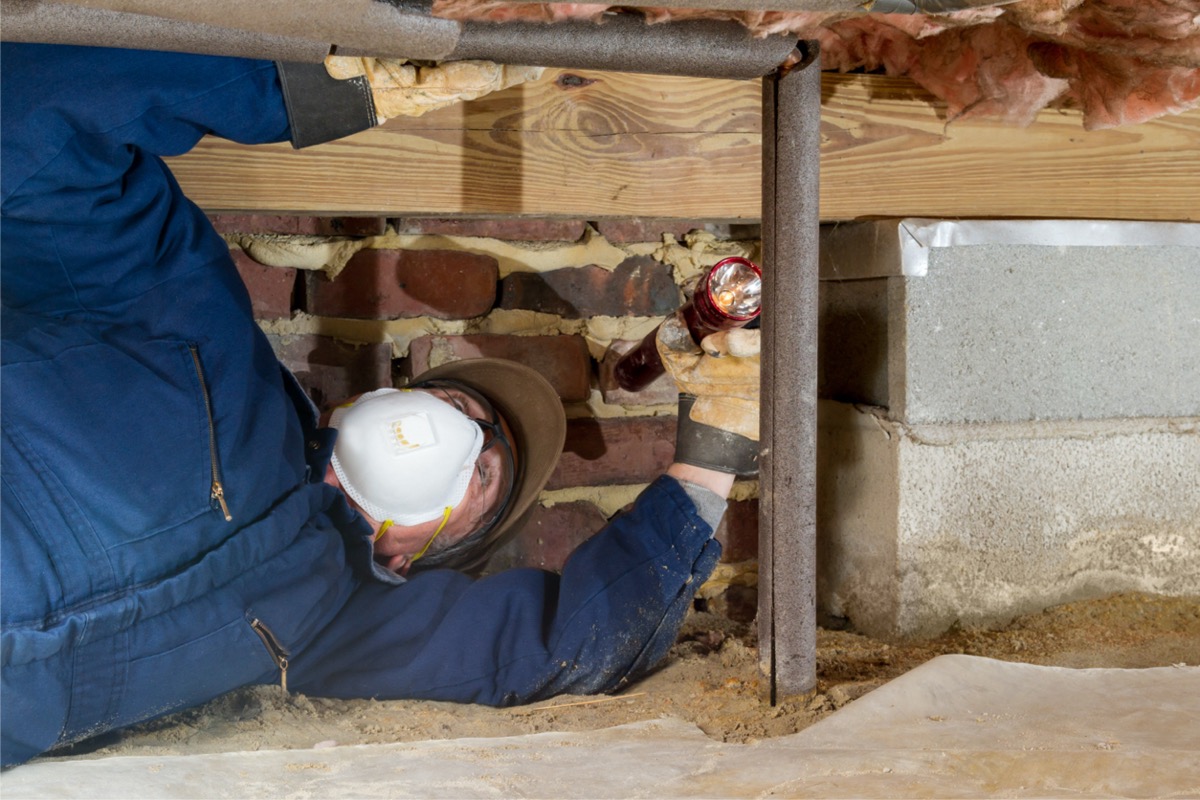
Keep gutters clean and divert downspouts away from the crawl space.
Check the downspouts around your house and make sure they aren’t damaged, loose, or directing the water towards the home. Make any necessary repairs and correct the direction of the flow to prevent the downspouts from contributing to the flooding.
Next, take a look at your gutters. If they aren’t regularly cleaned, then grass, leaves, dirt, and other debris can become trapped and create a clog. When this happens, rainwater doesn’t have anywhere to go, so it builds up in the gutter until it flows over the edge. Water on the ground can then accumulate around the foundation of the home and seep into the crawlspace. To help prevent your gutters from clogging, consider installing a gutter guard and regularly check the gutters to keep them clean.
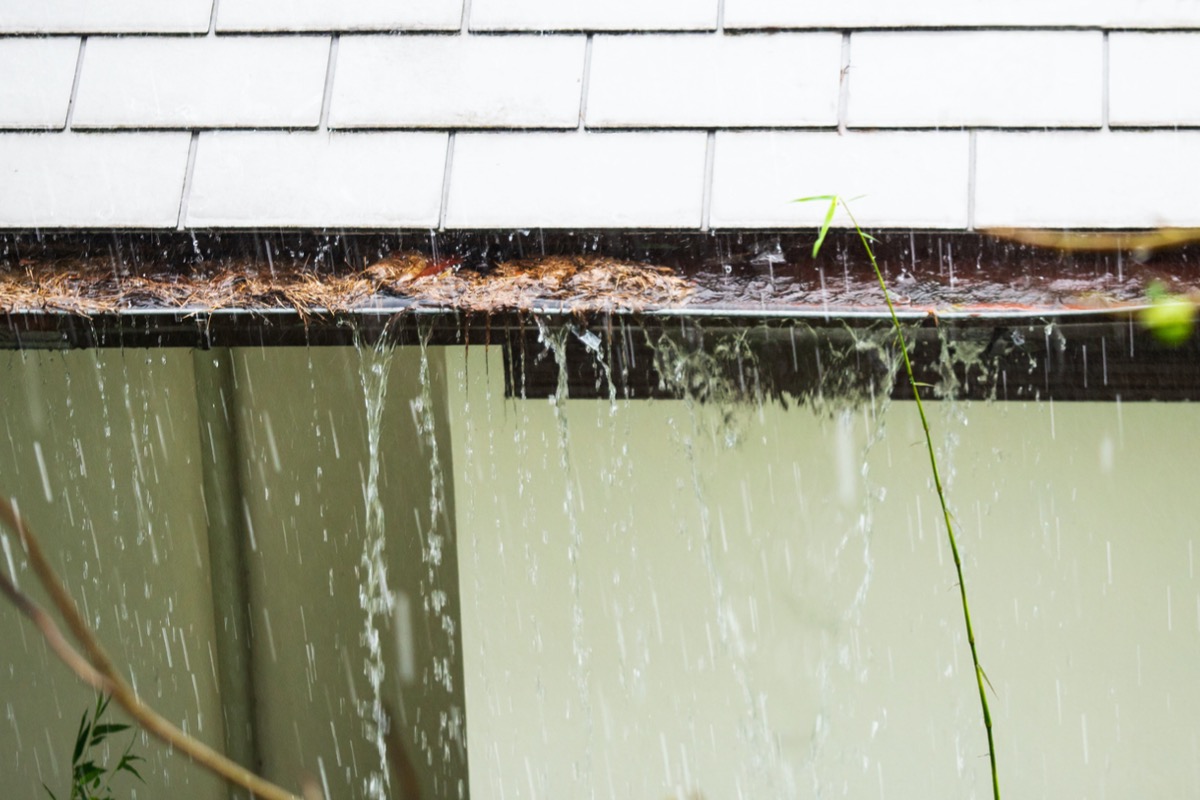
Drain the water out of the crawl space.
Figuring out how to drain water from under a house usually involves the use of a pump, a wet/dry shop vac, several fans, and a dehumidifier. If you have access to a submersible pump, this is the best way to dry out a flooded crawl space in a hurry; however, it isn’t necessary if the crawl space is only damp or just has a few puddles. For smaller floods, rely on a wet/dry shop vac to quickly address puddles.
Once the puddles have been cleaned up, position one or more fans in the crawl space so they blow air across the damp areas of the room. A dehumidifier can additionally help draw moisture out of the air. Make sure to keep access to the crawl space open to improve ventilation and speed up the drying process.
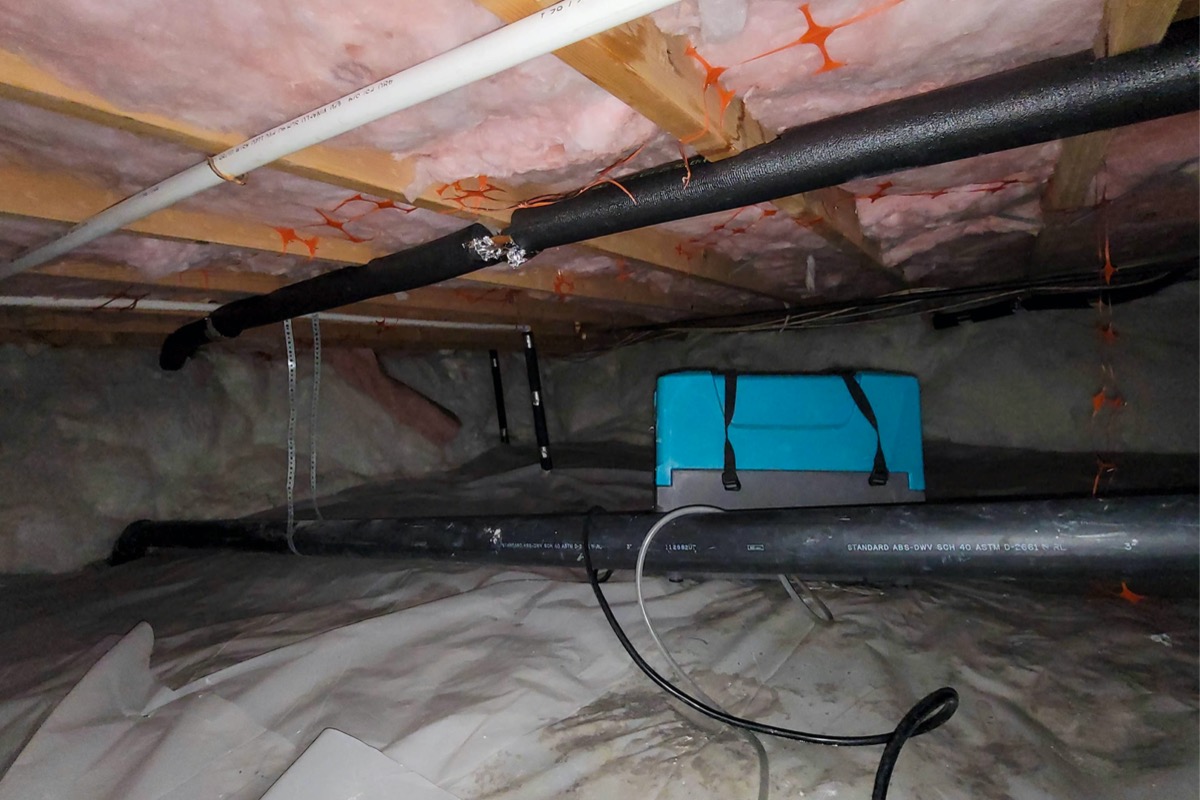
Fix troublesome grading around the foundation.
Another factor that can lead to crawl space flooding is the grading around a home. If the ground slopes toward your house, rainwater and meltwater will naturally pool around the foundation. This water buildup may remain outside the foundation, but in many cases, it gradually seeps into the basement or into the crawlspace where it continues to collect.
Minor issues with the grading can be corrected with DIY landscaping to slope the yard away from your home’s foundation, but major issues should be dealt with by a professional contractor. They will know how to waterproof the foundation and create proper drainage channels to help water flow away from the home. Based on their onsite assessment, some companies may also be able to offer advice about how to get water out of a crawl space and keep it out.
RELATED: How to Choose the Best Gutters for Your Home
Repair plumbing leaks.
An easy-to-spot source of flooding is an active leak, which is relatively simple to fix. First, locate the leak, whether it’s in a drainpipe, hot or cold water line, water main, or originating from a home appliance that uses water, like a dishwasher or washing machine.
If the leak is coming from a water line or appliance, close the nearest isolation valve (if one is available) or turn off the main shut-off valve to stop the flow of water. DIYers experienced with plumbing may be able to handle the repair on their own, but you may want to hire a professional plumber to fix the leak in most cases.
Install a sump pump.
One of the best steps you can take to deal with a crawl space that regularly floods is installing a sump pump or having a sump pump installed by a professional. These devices are especially helpful in flood-prone areas that are susceptible to groundwater flooding during the rainy season.
A sump pump sits inside a pit and prevents water from building up by pumping excess water out of the crawlspace. If water level reaches a given point in the pit, the sump pump will kick on and automatically pump the water out before flooding can occur.
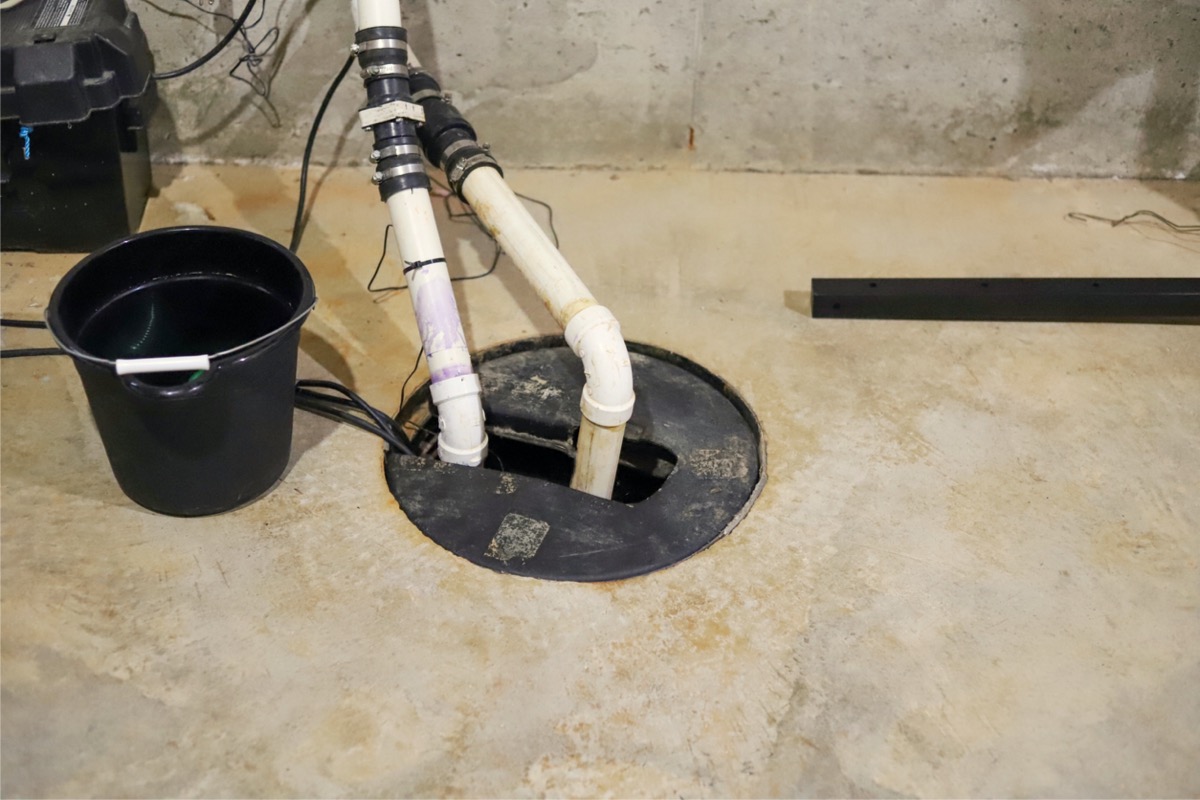
Add a vapor barrier and dehumidifier.
While a sump pump is a great way of dealing with recurring flooding in a crawl space, it’s also important to address airborne moisture that clings to exposed surfaces and causes rotting or mold and mildew growth. To help protect the floor, foundation, support beams, and walls of your home, it’s necessary to have a vapor barrier installed. This barrier will prevent the airborne moisture from reaching the structure of the home, trapping it inside the crawl space instead.
Additionally, you can install a dehumidifier to remove water from the air and substantially reduce crawl space moisture. Just keep in mind that not just any dehumidifier will do—you will need a unit powerful enough for the space, and it would be best to invest in a product that activates on its own when humidity exceeds a specified threshold. This will allow the dehumidifier to function automatically, rather than requiring you to climb into the crawl space to activate it manually.

